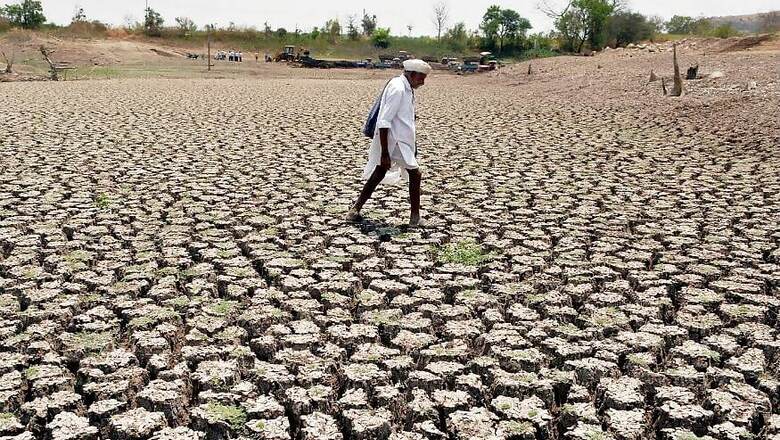
views
New Delhi: The high-resolution South Asia drought monitor developed by the Water and Climate Laboratory, IIT-Gandhinagar, has found that 16% of India is under ‘severe drought’ conditions, while more than 40% is under ‘drought.’
The system, conceived by Professor Vimal Mishra using satellite datasets and implemented by former PhD student Reepal Shah as an experimental drought monitor, provides near-real time (1 day lag) data over South Asia.
Mishra said, “The all-India drought condition is not good as more than 40% of the area is currently facing drought and about 17% of India is under severe drought.”
“A few areas in India have been facing persistent droughts which include Maharashtra, Tamil Nadu and northeastern states. The Indo-Gangetic plain has experienced a decline in the monsoon season rainfall, which caused drought in the region. However, drought situation in Uttar Pradesh is better this year due to normal monsoon in 2018,” he added.
One of the researchers and a PhD student, Saran Aadhar, said, “In the last three years, most Indian states received normal rainfall, except south Indian states like Tamil Nadu, Karnataka, Andhra Pradesh and Kerala, and some districts in Maharashtra. Majority regions in south India are facing continuous three-year water deficit.”
Moreover, in 2018, Madhya Pradesh, Jharkhand, Gujarat, Maharashtra and Arunachal Pradesh had below-normal rainfall which created drought condition over these regions.
The monitoring system shows the severe drought in the Arunachal Pradesh and central Maharashtra (Marathwada and Madhya Maharashtra regions).
At present, normal condition is likely to prevail in most parts of Karnataka, except some districts in the northern and southern parts of the state. “High temperature conditions can create a more severe condition in the drought areas,” Aadhar added.
The researchers do not define any large-scale situation, they analyse the drought condition at the high-resolution grid cell and using these datasets provide drought maps and the percentage of area under different categories of drought in India.
The drought monitor uses the VIC hydrological model simulations to evaluate meteorological, hydrological, and agricultural drought (deficit in rainfall, runoff and soil moisture, respectively) using observed and satellite datasets.
The main objective of the monitor is to develop an experimental drought monitoring and forecast system for South Asia, “which can provide real-time drought information, and this information can be used for water resources management and policy making,” said Aadhar.
















Comments
0 comment